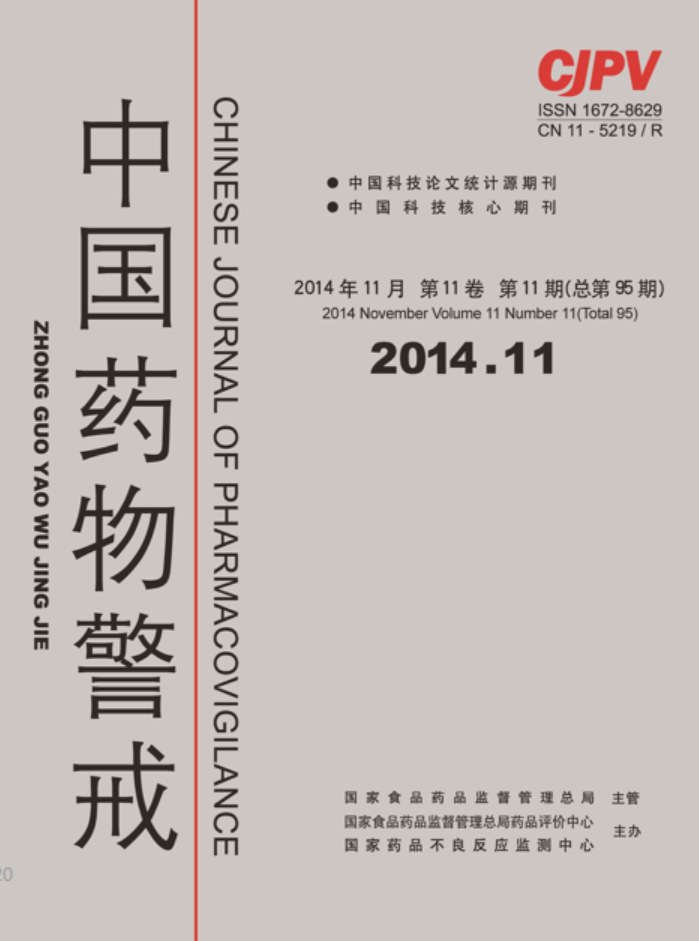|
|
Analysis of 189 Reports of Adverse Drug Reaction Caused by Intravenous Amiodarone
GAO Guan-nan LIU Yu-qing LI Yi-shi JIANG Jun ZHANG Xiao-Ji ZHANG Li-ming
2014, 11(11):
679-682.
Objective To analyze the features related factors, prevention and treatment methods of amiodarone induced adverse drug reaction (ADR). Methods Acquiring ADR case information from Beijing Adverse Drug Reaction Monitoring Center during 2005~2012 to observe the clinical manifestations of amiodarone ADR. And using statistical methods to analyze the relationship between amiodarone ADR severity and the impacts from the patient's gender, age, method of administration, dose.Also the processing of ADRand prognosis outcome were evaluated. Results A total of 189 cases of ADR reports were collected, 116 cases were male, mean age 67±15 years old, 73 cases were female, mean age 60±15 years old. There are 174 cases of circulatory system diseases, 4 cases of respiratory diseases, 4 cases of cancer, 2 cases of surgical diseases and 5 other cases. Administration includes load administered 37 cases, no load administered 152 cases. A total of 30 cases of serious adverse reactions were observed. Among them, liver damage is the most, accounting for 74.19%, and followed by anaphylactic shock and blood pressure drop, 6.45% respectively. Torsades de pointes ventricular tachycardia, renal insufficiency, palpitations, hypotension, respectively, accounted for 3.23%. ADR treatments include medication reduction, discontinuation and active clinical treatment. A total of 183 cases were followed up (6 cases failed to follow-up), of which 67 cases were cured, 106 cases were improved, 7 cases with sequelae, 3 deaths (original disease deaths).Serious ADRs induced by intravenous amiodarone account for 15.87%.There was no significant correlation between ADR occurrence and gender (P =0.061,> 0.05), age (P =0.140,>0.05), dose (P =0.857,>0.05), with or without use of a loading dose (P =0.572,>0.05). Conclusion In clinical applications, amiodarone is a relatively safe antiarrhythmic drug, but its ADRs diverse. Early symptomatic treatment will lead to good outcomes. In clinical work, clinicians should pay attention to individual amiodarone application, monitor ADR and reduce serious adverse events.
References |
Related Articles |
Metrics
|
